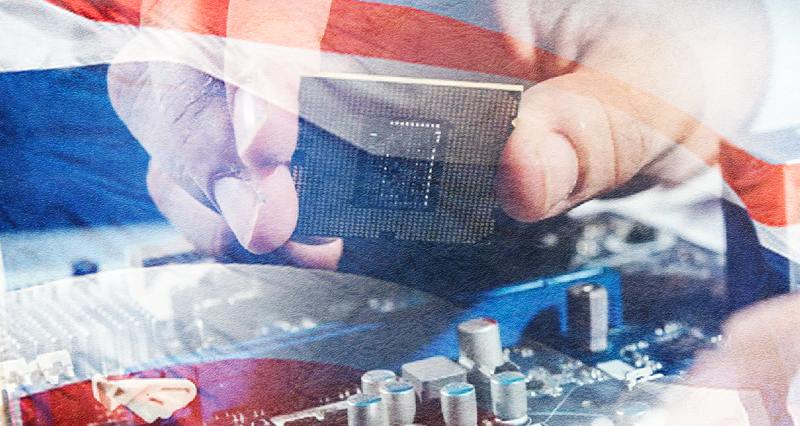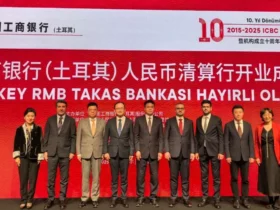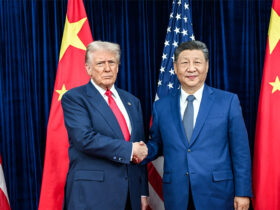Thailand must think regional and global.
Thailand must think regional and global.
By Mehmet Enes Beşer
Thailand is reentering the semiconductors game with a newfound sense of purpose. In an era of tech nationalism, supply chain reboot, and mounting pervasiveness of microelectronics everywhere from automobiles to artificial intelligence, Bangkok proclaimed that it aims to be a serious player. With incentives for foreign investment, incentives for domestic innovation, and linkages between regions, Thailand is attempting to move past playing its current role of packaging and assembly and moving further up the value chain for semiconductors. The journey forward might be less easy than all this brouhaha, however. To achieve its aspiration, Thailand’s entry into semiconductors would need to be spearheaded not by whim but by governance—level-headed, clean, and vision-oriented in the making.
At the heart of Thailand’s strategy is its accurate positioning. Southeast Asia is now a pivotal node in the global value chain of semiconductors—not in chip design, which remains the preserve of the United States and Taiwan—but in testing, packaging, and back-end manufacturing. Thailand has been the site of large operations of firms like Western Digital and Infineon, offering a low-cost, stable platform for downstream electronics. With multinational firms now looking to shift away from China amid trade tensions and geopolitical uncertainty, Thailand wants to capitalize on this role and attract new investment in design and production.
The government of Thailand has not waited. With its Thailand 4.0 economic plan, the government is offering tax incentives, establishing special high-tech manufacturing economic zones, and funding university education in microelectronics and engineering. Recent speculation about potential alliances with Taiwanese, South Korean, and US chip giants talks of intention. The Eastern Economic Corridor (EEC) has been touted as a next-generation hub of innovation and high-value manufacturing. Thailand wants to be more than a workbench—it wants to be an architect.
Aspiration needs to match capability, however. The semiconductor industry is notoriously capital-hungry, technology-hungry, and susceptible to global volatility. For creating a competitive home industry will require infrastructure and tax breaks, along with something more: world-class talent, frontier R&D, and a system of innovation strong enough to counter the ongoing spiral of miniaturization and integration. University-industry connections in Thailand are still relatively underdeveloped, while the home deep-tech startup scene is still in the infancy stage. If Thailand does not take note of significant improvement in its research and education sector, it may remain a second fiddle, overly reliant on external expertise.
Less pressing but no less vital are issues of governance. The semiconductor industry is not just an economic venture—it’s strategic. Governments globally are racing to lock up chip supplies because they realize their significance to national security, technological sovereignty, and economic resilience. Under such conditions, investors’ confidence does not depend on the strength of subsidies or the size of markets—it depends on the rule of law, predictability of regulations, and policy consistency. Thailand’s bureaucratic untrustworthiness, political instability, and history of sudden regulatory flip-flop can deter long-term investors who need stability rather than melodrama.
Environmental regulation cannot be neglected either. Semiconductors manufacturing is water- and energy-intensive in its consumption. As Thailand pushes ahead with its industrialization campaign, it must ensure that sustainability is not left behind. Taiwan—where water scarcity and environmental degradation now threaten chip production—should be a warning to avoid. Green industrial policy embracing circular manufacturing, renewable energy, and tough environmental regulation will be the key if Thailand is to develop a genuinely future-proof industry.
Thailand must also think regional and think global. It cannot compete head-on with competitors such as Taiwan and South Korea, but it may establish a niche. It can, for instance, shift into automotive semiconductors on the strength of its established automobile sector, or specialize in advanced packaging technology where entry does not present such a high curve. Strategic partnership with ASEAN neighbors can establish a regional supply chain for semiconductors with nations each specializing but cumulatively constraining dependence on a single nation. Cross-border sharing of human resources, collaborative R&D, and coordinated standards could turn Southeast Asia into a robust microelectronics corridor—based in but not dominated by Thailand.
Foreign investment will be needed, but no less vital will be creating Thai-owned champions with the ambition and ability to dominate. It’s a mind-shift—taking our idea of industrial policy from one in which it’s a scramble for multinational capital to one of developing national champions capable of competing and innovating overseas. Public-private partnerships, venture capital for deep-tech start-ups, and consistent state support for industrial R&D need to be institutionalized, not as an accident.
Conclusion
Thailand’s timing and welcome entry into the semiconductor arena is well-timed. International demand for microchips remains unabated, and the need for diversified and resilient supply chains has never been more evident. With geography, industrial capacity, and policy tailwinds, Thailand has much of what it needs to become a serious player in the international chip supply chain.
But the world of semiconductors is merciless. It penalizes nations that wed capital with coherence, innovation with infrastructure, and ambition with accountability. Without strategic vision—founded on sound institutions, proper regulation, and an active industrial policy—Thailand’s dream of becoming a semiconductor power can crash on the shoals of its own conceit.
It’s not a sprint, it’s a marathon. Those nations that currently lead in semiconductors didn’t just wake up and become leaders overnight—they built capability over generations of consistent investment, political will, and public confidence. Thailand now has the potential to follow on the same path. Whether or not it’s a true leader in advanced microelectronics or just another assembly-line outpost is something that it determines today—on governance, sustainability, and vision for the long term.
If Thailand does it right, it can be not just a beneficiary of the semiconductor revolution—a catalyst in writing its next chapter—but a catalyst. The chips are small, but stakes have never been higher.

















Leave a Reply